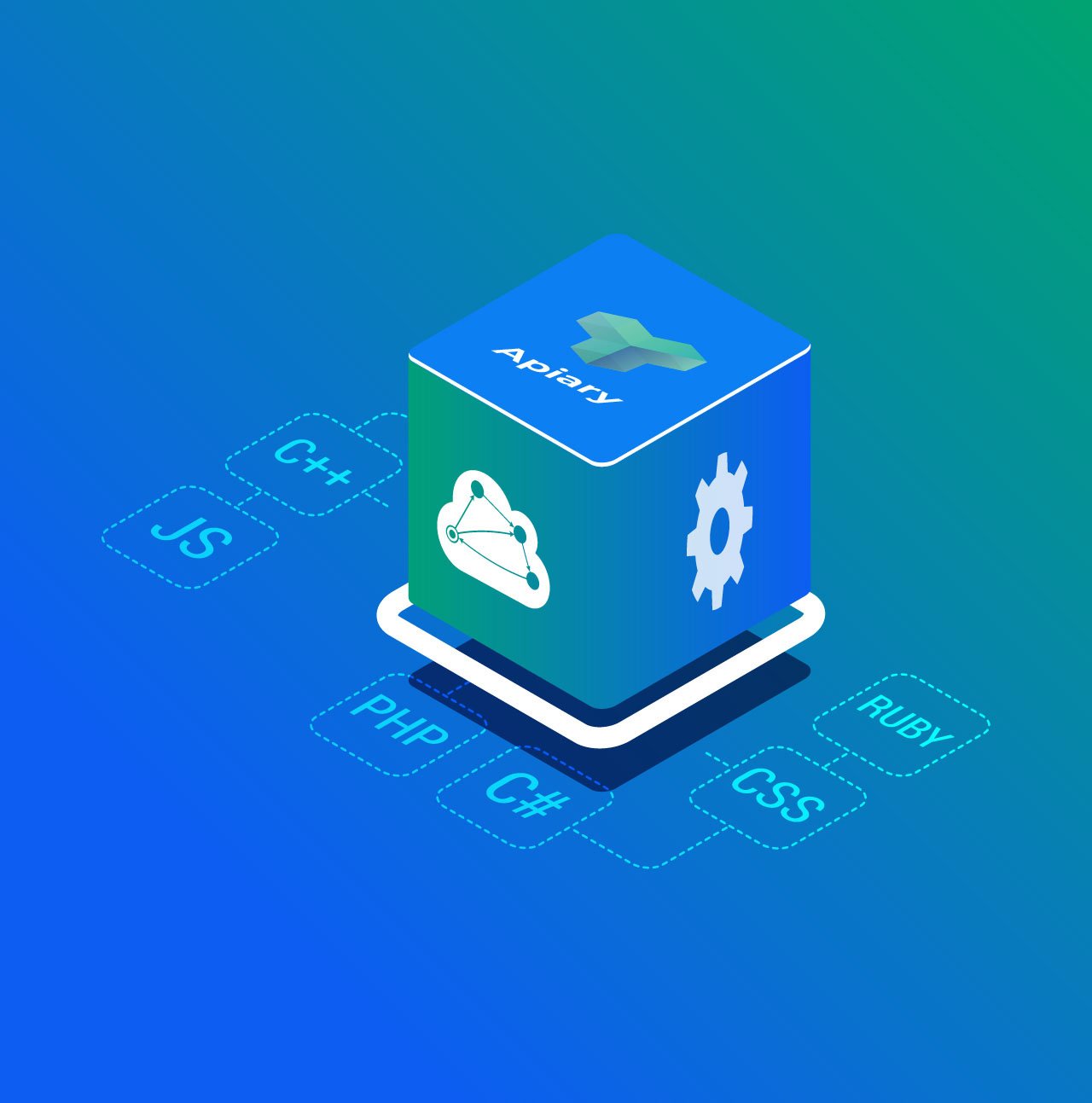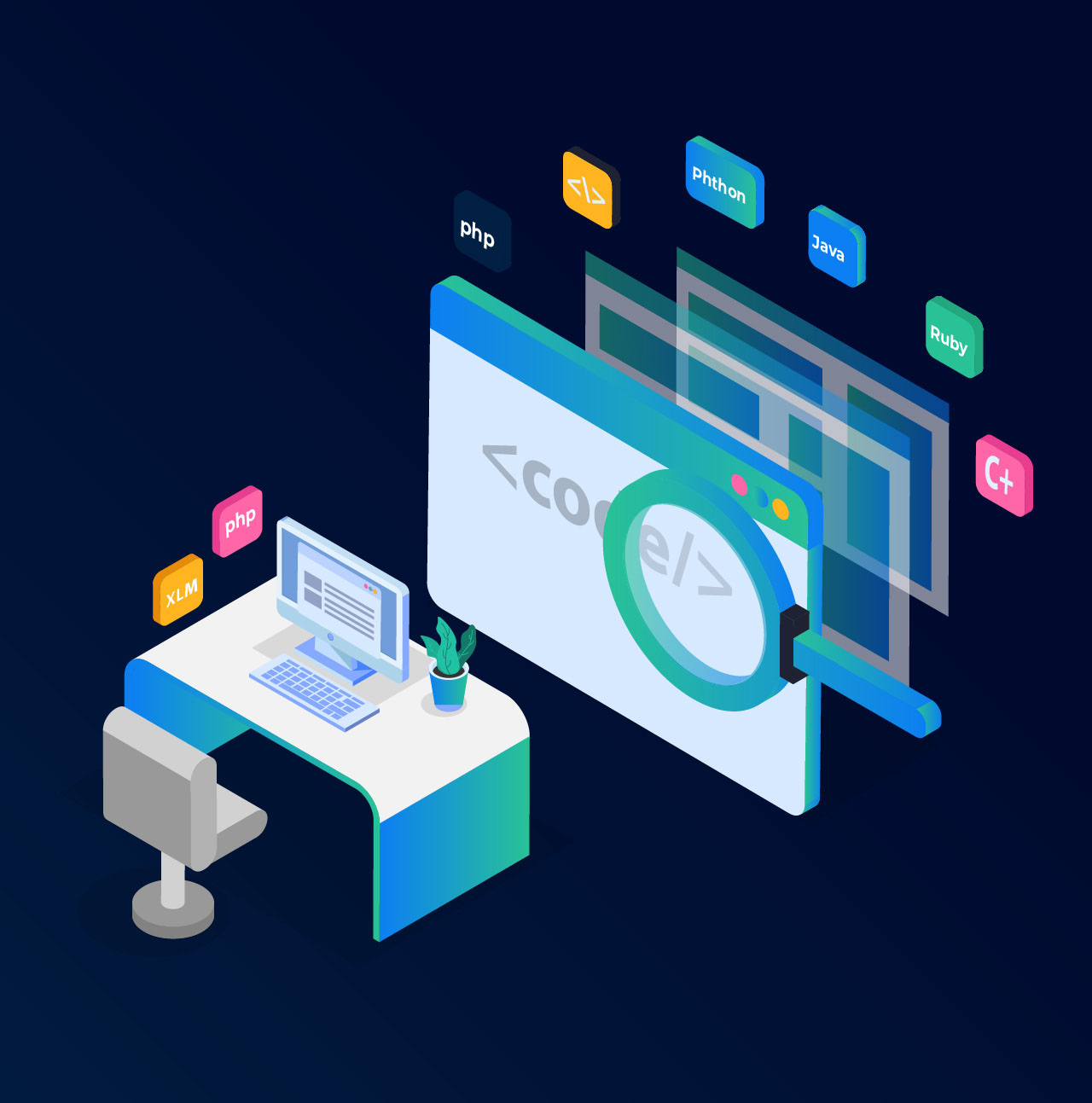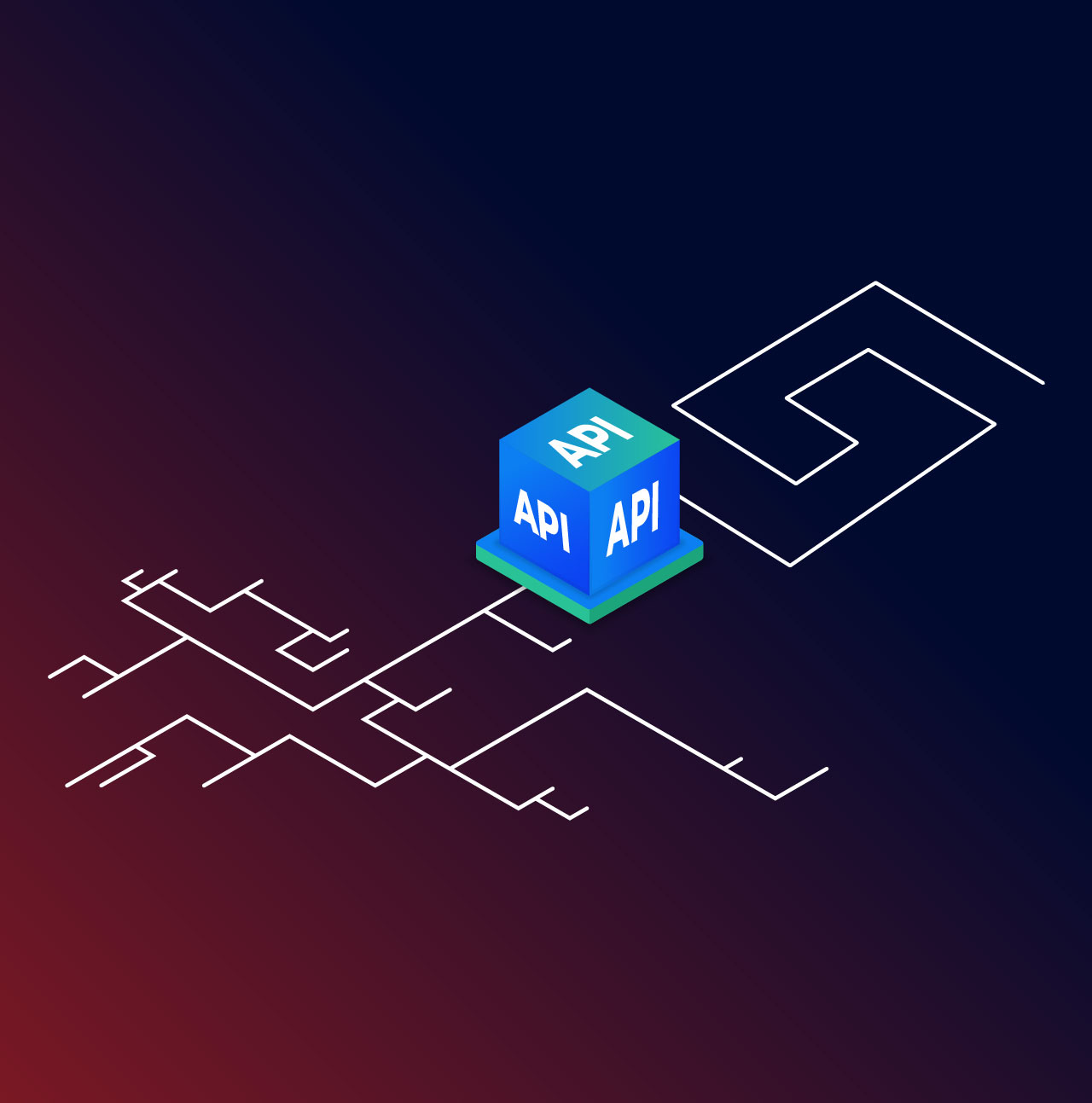Whenever you’re dealing with APIs, you need to provide more than just an API itself. Delivering a great developer experience for the API through a comprehensive developer portal is the key to bridging the connection between a developer and an API provider.
Defining Developer Experience
Developer experience tells us how developers interact with the API throughout the API lifecycle. Offering a seamless developer experience lets the developer focus on what is important without dealing with other non-technical concerns like scaling and robustness.
Since APIs do not provide a user interface, the biggest challenge to provide a good developer experience is documenting an API. API documentation is a vital way to communicate with developers on how to use the API and make sure that the API is fully adopted. Therefore, the need for complete and comprehensive documentation minimizes the developer’s struggle with consuming the API.
What Elements Should a Developer Portal Contain?
API documentation requires more than just an API reference. It requires having a developer portal that gives developers everything they need to quickly integrate your API into their application stack. A good developer portal is a one-stop shop where developers can find, access, learn, and experiment with APIs by trying out the API and defined sample codes.
Creating an interactive developer portal benefits businesses that offer APIs as a product, or are API-first. Every great developer portal should contain these elements:
Consolidated Documentation
The portal should contain all the documentation in one place to enable developers to find and utilize the APIs more efficiently and conveniently.
Getting Started Guides, Training, and Tutorials
Comprehensive getting started guides in the developer portal simplify the onboarding process for API developers. The step-by-step instructions help developers set up the environment in their favorite IDE and guide them on dealing with authentication tokens/keys to make their first API call.
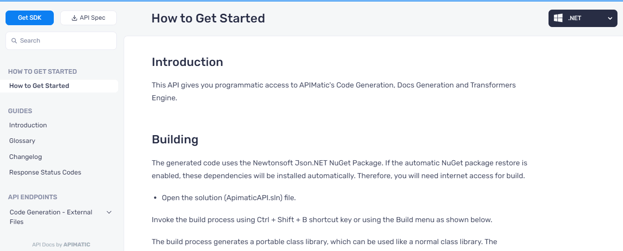
Language-Specific API Reference Documentation
Apart from the guides and tutorials, adding language-specific API reference documentation to the portal can help developers see the exact options available for all endpoints in the API. It helps explain the meaning of properties and methods, the possible input values and validation rules, and expands on errors that are likely to occur in different situations.
By offering language-specific documentation, you can speak to your developers in their language; ultimately enhancing the API adoption rate. Also, downloading SDKs is not just a download button rather every language gives developers a similar experience within the portal.
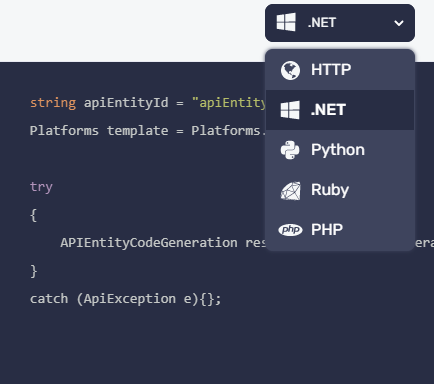
Idiomatic Code Samples and Helper Libraries
Code samples perform the heavy lifting for developers, enable quicker integration of the API, and demonstrate the SDK usage for each API endpoint by providing ready-to-copy code in popular languages including .NET, Python, Ruby, PHP, Java, and TypeScript.
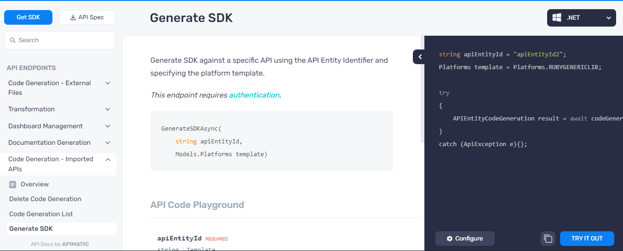
Try-it-Out Live API Calls
The ability to make live API calls directly from the portal along with API authentication helps developers get started faster as it reduces the time to their first Hello World. It cuts out their development pain point of not having to go back to the IDEs to create requests. Also, they are able to get real responses directly, showcasing how the API will add value to their applications.
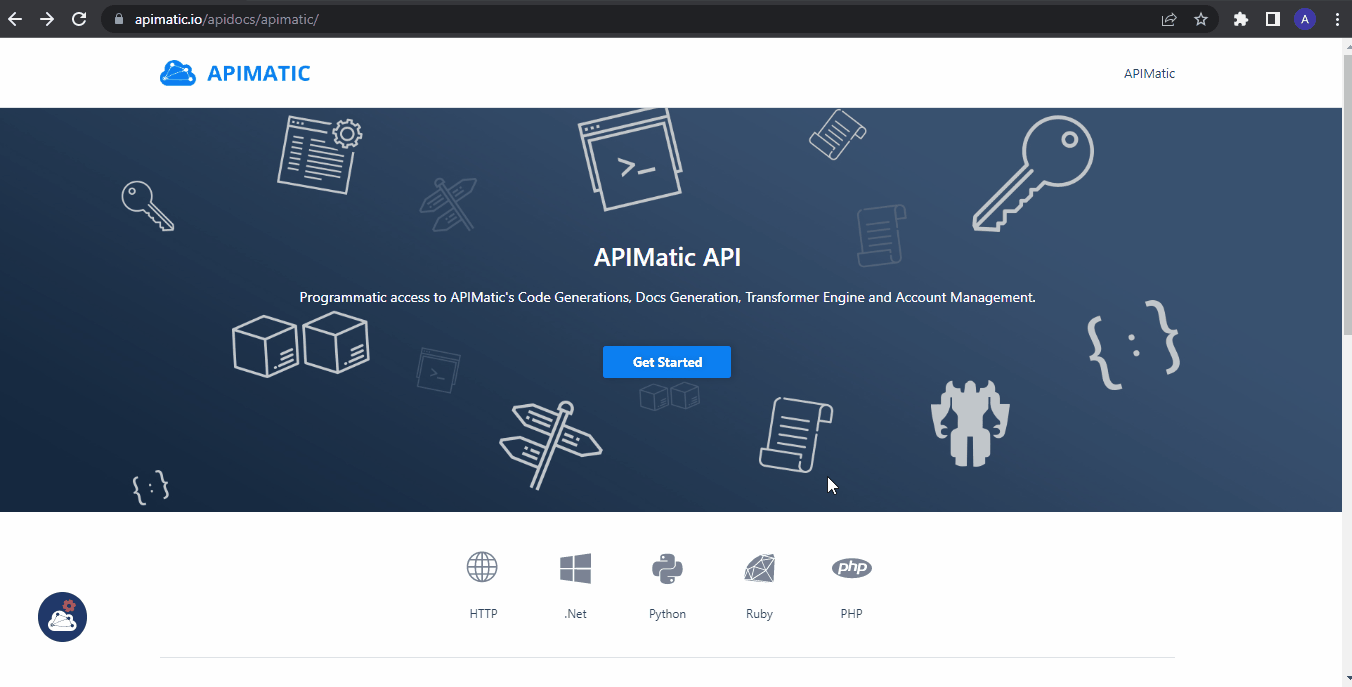
Availability of SDKs in Multiple Languages
At the end of the day, the goal of every developer is to integrate with your API. Helping developers consume the API is challenging. Hence, providing SDKs not only reduces the API integration time but also saves the developer’s time and cost. SDKs help accelerate the API consumption process, as it cuts down the time to serialize or deserialize, manually add dependencies and resolve issues while integrating with your API.
Offering SDKs in multiple languages also expands your developer community outreach as developers can comfortably plug your API into their application without having to figure out the integration steps. For more information on SDKs, refer to the detailed blog on An Insight into APIMatic’s Autogenerated SDKs..png?width=1319&height=525&name=image-1%20(1).png)
Represent the Brand and Values
A great developer portal showcases your value as an organization. By creating an excellent developer experience, you’re inviting more engagement toward your products and showing exactly why people want to do business with you.
Autogenerate a Comprehensive API portal with APIMatic
To magnify your APIs visibility, APIMatic provides a comprehensive API portal that contains all of the aforementioned developer experience components including
- SDKs in all supported languages
- Language-specific API reference
- Custom Markdown guides
- Auto-generated getting started manuals
- API export in more than 10 API specification formats
- API code playground for live API calls
- Reactive code samples
- Customizability
You only need to provide your API definition in any of the supported formats, and APIMatic handles the rest. Depending on your environment, you can generate an API portal within minutes from the web-based dashboard, API, or APIMatic CLI.
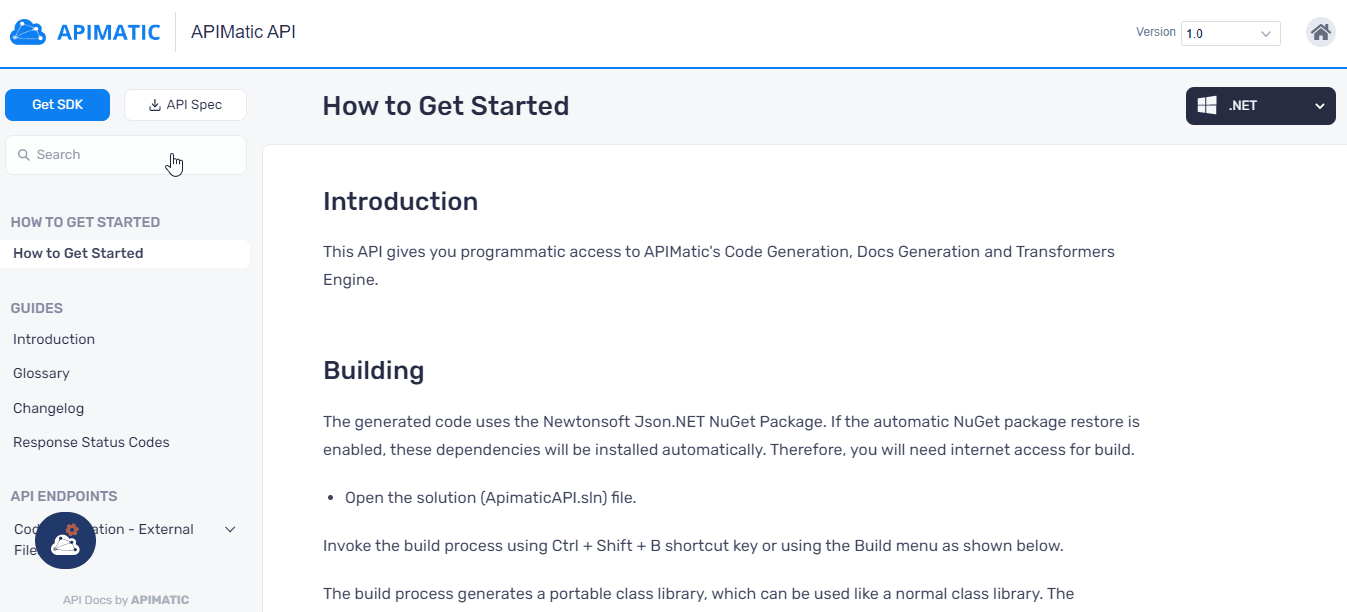
To learn more about how the developer interacts with your API from discovery to integration, and how the API portal can aid them in each phase, watch the webinar: Low API Adoption: Have you Blamed your portal Yet?
Conclusion
Developer portals are the most essential factor for a developer as they serve as a key to a great developer experience and show the identity of your brand. APIMatic provides all-in-one API developer portals with all the critical elements to boost API consumption. Try out APIMatic to generate your own API portal along with autogenerated SDKs within minutes!
Thanks to @arooj-arshad.



